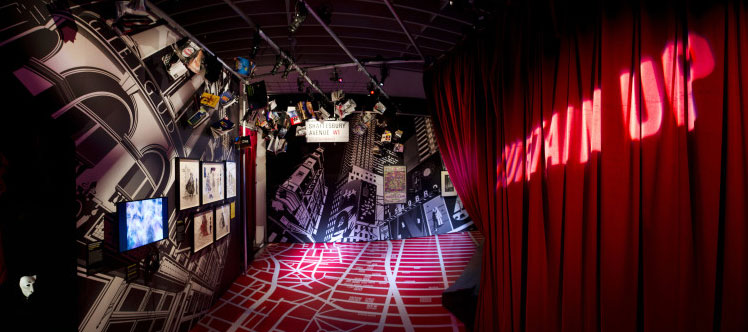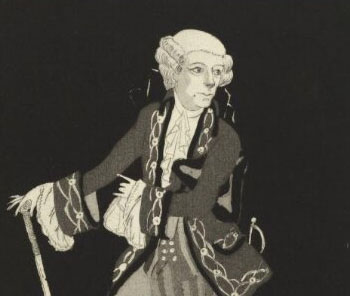Interested in becoming a curator at the V&A? Today we bring you Ashley Gonik’s interview with Anna Landreth-Strong, Curator of Modern and Contemporary Performance in the Theatre and Performance Collections. They discuss Anna’s road to becoming a V&A curator, and her work on the current Curtain Up exhibition.
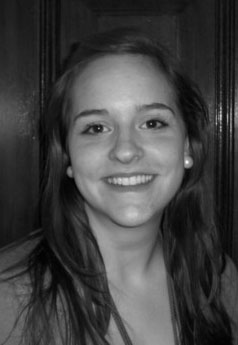
Ashley Gonik: I would like to start with your own professional background. How did you become a curator, and specifically a curator at the V&A? And since I’m doing this in my capacity as a placement student, I was wondering specifically if you did any volunteering or internships.
Anna Landreth-Strong: I studied English Literature and Theatre at the University of Leeds […] I thought at the time that I wanted to work in theatre and be a producer, make plays and various things, so I did a few things at the Edinburgh Festival. […] The V&A had some voluntary placements that you could do alongside other jobs you were doing, so I did a bit of volunteering here. Then I decided that I wanted to study my Master’s, so I did a Master’s in Cultural Policy at City University (sort of arts management), and once I finished that, I came back to work at the V&A because of various projects in the Theatre department that were going on. So the theatre was always the first and foremost thing, apart from museums. But actually, exhibitions are a good way of communicating ideas in a different way perhaps from putting on a performance. It’s great because you tend to get a nice wide audience, so you have to consider all of them.
AG: On the theme of communication: besides the tagline that goes with the display—“celebrating 40 years of theatre in London and New York”—how would you describe the display in one sentence?
ALS: We wanted to create something that celebrated all of the very different, multifaceted crafts and disciplines that go into theatre every night. It was a great way to celebrate the awards, the staff, household names, but also the sometimes hundreds of people who work behind the scenes to create every award-winning show.
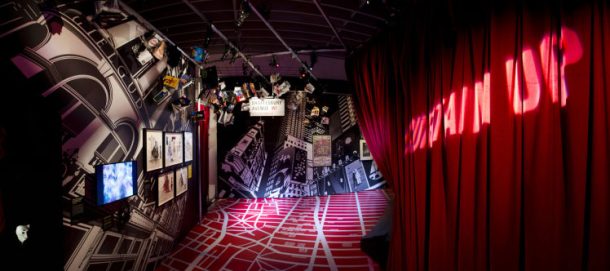
AG: How long was the planning process for the display, and how many people were involved?
ALS: Lots of people are involved every time we do a project at the V&A. This one was particularly special because we were working with the New York Public Library for the Performing Arts as well as our colleagues at the Society of London Theatre. […] Tom Piper was one of our designers for the show, and he worked with Alan Farlie at RFK Architects because we wanted them to think about how they might display the material a bit differently. So rather than necessarily assuming that all of the flat work would be framed and put on walls, we wanted them to think about how they might use the height of the space and display some of it in slightly more unusual ways.
AG: I think it’s really successful, the way you move through it. From the very beginning of planning the display, did you set out to balance static museum objects, videos, and the immersive sections, like the Chorus Line passage and the Curious Incident room?
ALS: Yeah. I mean, obviously, in an ideal world, we would have a much bigger space and we could put many more things in it. Of course we always have to consider things like budgets and practical movement around the space. […] But the idea was that the whole thing should feel like you’d stepped into an environment. Obviously it’s a challenge working in a museum like the V&A where there are miles and miles of corridors and beautiful things to see, so we really wanted people, when they’ve stepped into this space, perhaps not expecting to, to have a rush of oh wow, I’ve arrived, something’s about to happen.
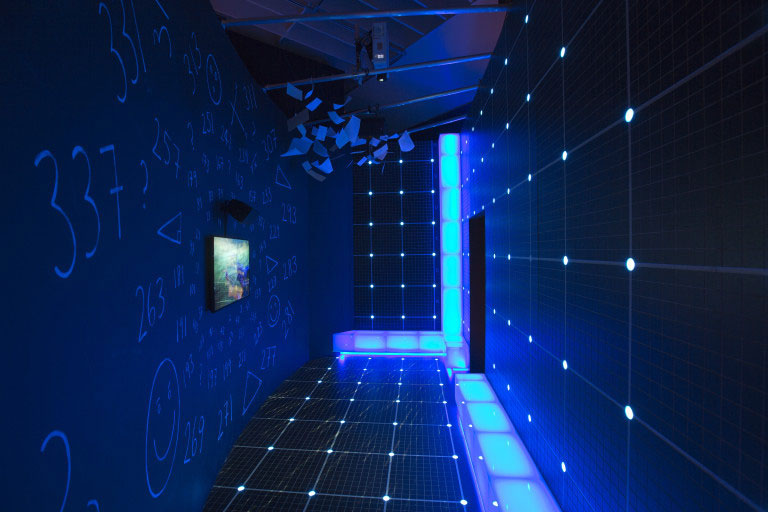
AG: You’ve anticipated my next question: How do you envision a visitor’s response to the display? Specifically, when I was conducting visitor surveys, I saw a lot of people who seemed to have come through the permanent exhibition first and then were entering the display from the back. Was this discussed during development as either a benefit or pitfall of the design? And how do you think it might change a visitor’s perception of the message you’re trying to get across curatorially?
ALS: It was something that was discussed. First and foremost, we wanted people to come and have fun. Come and feel that they were seeing and experiencing something of the theatre, and perhaps learn more about behind the scenes. […] Obviously the intention is that you arrive at the start and move through the display space by going around to the right. That said, it’s not a chronological exhibition, it’s more thematic. […] Most people quite enjoy the extra layer of interpretation that presenting something theatrically brings. […] So with our major shows, we often try to have a moment of crescendo and balance it with more intimate moments of calm in order that the whole thing, as it were, becomes a piece of theatre with an emotional journey as well as a narrative journey.
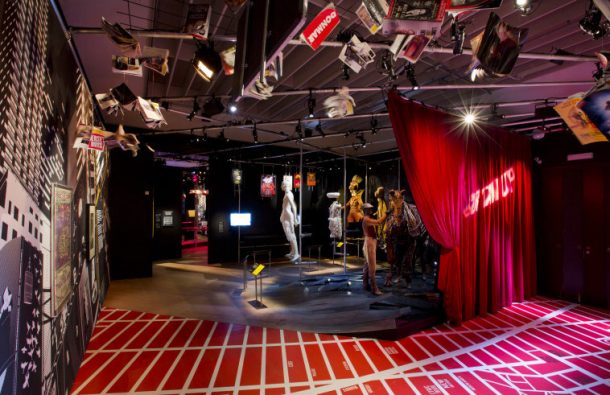
AG: I hadn’t thought of it in that way: the display as theatre itself. It’s very interesting […] I have to admit, when I would go through it […] what I perceived was a bit of a split focus—you’ve already kind of brought this up—a split focus between development and awards in the life cycle of a show or of a season. I was wondering if you agreed with this observation and whether this was intentional.
ALS: So that’s probably a good thing. Obviously we put the display on at this time to celebrate the 40th anniversary of the Olivier Awards, and excitingly, it’s also the 70th anniversary of the Tonys this year, so it was a really good opportunity. […] What we really wanted to make sure we were doing was celebrating the enormous range and diverse pool of people, creative people who work together. No director wins an award for Best Musical, say, stands up and says “well done me.” They always say, “well I couldn’t have done this without my cast, without my designers, without my crew, without my producers.” It’s a real collaborative endeavour. No show ever wins Best Play of the year by just being a really great play. It’s certainly to do with everybody who has contributed to that. So that was an important thing that we wanted to get across, just how collaborative the theatre is, and the process of the exhibition followed suit.
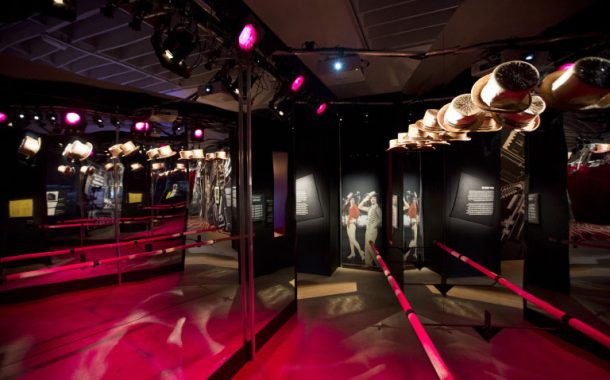
AG: It strikes me as a particularly difficult mandate for a department with “performance” in the name to find material evidence of that and organizing it in such a way. I was wondering if you could just talk about that briefly.
ALS: Performance, by its nature, is ephemeral […] Obviously, in a great performance, you can experience it in real time, you go away and the impression is left on you and your mind and your heart. You talk about it, you digest it. And what’s wonderful about the V&A’s theatre collection is that it enables us to enrich that experience by capturing elements of the process and traces that have been left behind. […] The National Video Archive of Performance has over 300 recordings. We do also have a photographer who goes around documenting performance through that, and we’ve got over a million theatrical photographs in our collection alone, which are a really great record for capturing what was going on on-stage. But when you add to that the material from the creative and production teams—we collect all the business reports, for example; we collect show reports, designs, finished costumes, and actually all of that can help to build up a picture of what a performance has been like. […] We also have to think about what’s going to be important in the future. I don’t think anybody is saying “well why have you collected that manuscript from 200 years ago?” now. The value of that, in terms of its cultural, social significance is irrefutable.
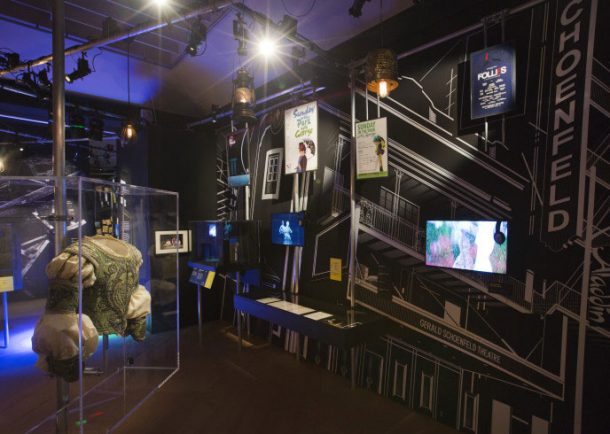
AG: I was just wondering: when you go out for a night, for a musical or play, what is your favourite part of that whole experience?
ALS: So I used to usher at the Old Vic Theatre for many years, […] and I really firmly believe that, it’s not just what happens on stage. It’s the entire framing of what you’re going to see, from the moment you get an email telling you about what the upcoming program is, right through to the journey on the tube home or the day after or two weeks after, all of that sort of frames and shapes your experience. I obviously really love going to the theatre. I particularly like going to something if it’s unexpected or unknown or I’m not quite sure what the format will be. I like the anticipation that that brings, not knowing, for example, if I’m going to be seated or if it’s promenade or what the ambience is going to be like.
AG: To wrap up: you mentioned the Revolutions exhibition. I was wondering if you could just tease any exciting new projects that are coming up that you’re working on, or more generally within the Theatre and Performance department.
ALS: Sure. It’s a really exciting time in the department. We are working on lots of shows in different genres. The one that’s imminent is You Say You Want a Revolution? Records and Rebels 1966–1970 […] It touches on fashion, music, photography, design, product design, and tells the story of those five years and how they changed the world. […] We’re doing lots of projects across many genres, from opera to historic theatres to festivals. Coming up in our space, as well as our permanent galleries, which will be having a rotation of the poster collection—if you’ve visited the V&A before, you should come back at the end of summer and there will be lots of new objects on display!
Ashley Gonik is finishing up an MA in History of Art at the University of York with a dissertation on early modern historical tables. As part of her York-V&A Placement with Theatre and Performance, she conducted a visitor assessment for the Curtain Up display, assisted on the Records and Rebels exhibition, and developed an independent research project on self-referentiality in musical theatre. You can follow the project at the All about Musicals blog or on Twitter.
Curtain Up: Celebrating 40 Years of Theatre in London and New York is a free exhibition in Gallery 104 and closes on 31 August.
You Say You Want a Revolution? Records and Rebels 1966-1970 opens Saturday 10 September – 26 February 2017.
Mentioned in the interview, the recent Theatre and Performance poster rotation is complete – why not drop by Galleries 105 & 106 to check out our brand new display?
